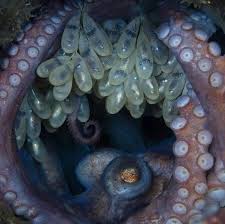The Animal Kingdom’s Ultimate Sacrifice: 10 Species That Reproduce Once and Then Die

The cycle of life within the animal kingdom is diverse and intricate, shaped by millions of years of evolution. Among the many reproductive strategies that species employ, semelparity stands out as a remarkable and extreme phenomenon. Semelparity refers to a life history trait where an organism reproduces only once before death. This strategy contrasts with iteroparity, where animals reproduce multiple times throughout their lives. In semelparous species, reproduction is often so energetically costly or risky that it leads to the death of the parent shortly afterward.
This reproductive strategy can be seen in various animals across different habitats, from insects and fish to mammals. It often involves a dramatic transformation or effort during the breeding period, ensuring that the organism maximizes its reproductive output in a single event, thus passing on its genes before dying. Below are ten fascinating examples of animals that exhibit semelparity, each highlighting the diversity and complexity of life’s reproductive strategies.
“Beat the Pressure: A Comprehensive Guide to Lowering Blood Pressure Naturally.”
Buy book from Gumroad or Paystack
- Pacific Salmon (Genus Oncorhynchus)
Pacific salmon are perhaps the most famous example of semelparity. These fish hatch in freshwater, migrate to the ocean to mature, and then return to their natal streams to spawn. The journey upstream is arduous, involving leaping over waterfalls and evading predators. After spawning, the adults undergo rapid physiological deterioration and die within days or weeks. Their bodies provide nutrients that support the ecosystem, aiding the growth of their offspring. - Praying Mantis (Order Mantodea)
Female praying mantises are known for their sometimes deadly mating behavior. After or during copulation, females may consume their mates. The reproductive effort is intense, and after laying eggs, female mantises typically die. This ensures that the female’s energy is devoted solely to producing and protecting the next generation. - Antechinus (Genus Antechinus)
These small Australian marsupials are known for their intense and fatal mating season. Males engage in continuous mating frenzies lasting up to two weeks, after which their immune systems collapse due to stress and exhaustion, leading to death. Females raise the young alone, having invested everything into a single breeding season. - Mayflies (Order Ephemeroptera)
Mayflies have one of the shortest adult lifespans in the animal kingdom—sometimes just a few hours to days. Their sole purpose as adults is to reproduce. After emerging from the water as winged adults, they mate, lay eggs in water, and die almost immediately. - Octopus (Various species, including the Giant Pacific Octopus)
Female octopuses display semelparity by dedicating themselves to guarding and tending eggs without eating. This period can last several months, during which the female starves. After the eggs hatch, the mother dies. Males typically die shortly after mating. - European Eel (Anguilla anguilla)
European eels have a mysterious life cycle involving a long migration to the Sargasso Sea to spawn once before dying. The adults do not feed during this journey, expending all their energy on reproduction, after which they perish. - Spider Species (Various)
Many spider species, such as black widows, exhibit semelparity. Females may produce a single large brood and die shortly afterward. In some species, males die soon after mating, sometimes as a result of being consumed by the female. - Silkworm Moth (Bombyx mori)
Adult silkworm moths do not feed and live only long enough to mate and lay eggs. After reproduction, the moths die, having completed their life cycle. - Squid (Various species)
Certain squid species reproduce once and die shortly after. During their reproductive phase, they often gather in large groups, spawn, and then perish, leaving their young to develop independently. - Cicadas (Genus Magicicada)
Periodical cicadas spend most of their lives underground as nymphs for 13 or 17 years. Once they emerge as adults, their only purpose is to reproduce. After mating and laying eggs, the adults die within a few weeks.
In conclusion, semelparity is a fascinating reproductive strategy that underscores the sacrifices some species make to ensure the survival of the next generation. While it might seem drastic, this approach can be highly effective in certain ecological contexts, maximizing reproductive success when conditions are right. Through these examples, we gain insight into the incredible diversity of life and the various ways nature balances survival and reproduction.
💔 “She said she loved me. And for fifty-two years, I believed her.” 💔
Buy The Book "The Longest Lie: A Husband’s Journey Through Love, Betrayal, and Redemption" From Gumroad






